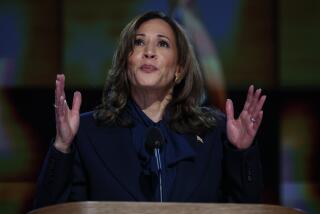VIEWPOINTS : BLACK AMERICA: TALE OF TWO NATIONS : Economic Extremes Become the Norm as Population Polarizes
- Share via
In our number-crazed nation, we use averages to paint pictures of life: the average income of 40-year-old men, the average math score of sixth-grade girls. But when a group is polarizing--actually splitting apart over time--the average becomes a useless statistic.
In describing Black America today, polarization is a word that comes to mind. Over time, a broad black working class is being replaced by a growing middle class and a bigger--and still expanding--class of long-term poor, the underclass. To understand the current status of black Americans, one needs to examine not just the top or the bottom but both parts together; to see the population whole.
The signs of polarization are at least two decades old. In the 1960s economic boom, many black men and women made enormous economic progress but the least skilled were still in trouble. In 1969, a landmark year for low unemployment, one-quarter of all black males age 25 to 55 reported incomes below the federal poverty standard for a family of four.
Nonetheless, the 1960s and early 1970s were still a time when a man didn’t need a college degree to make a decent living. In 1973, a 30-year-old black man with a high school diploma earned about $20,000 (all incomes given here are based on the dollar’s value in 1986). But, like white men without college educations, these black men were concentrated in manufacturing industries and construction. And over the next 13 years, manufacturing employment came under enormous pressure--first from recessions and, after 1982, from the overvalued dollar, which destroyed export sales.
When high school-educated men looked to other sectors, they found the labor market flooded with college-educated baby boomers, black and white, and older women. By the mid-1980s, a 30-year-old black man earned about $14,000 on the average if he had a high school degree (but no further education) and about $9,000 if he had not gotten that far in school.
Declining wages were paralleled by an increase in black families headed by females. Like the issue of polarization itself, black families headed by women are not a new problem. Black scholars from W. E. B. DuBois through William Julius Wilson have emphasized both the historical existence of such families and the role of black men’s low earnings in their creation. Amid boom times from 1960 to 1970, the proportion of black families headed by women grew to 31% from 22%. The weak economy of the last 15 years exacerbated the problem so that, according to the most recent statistics, 42% of black families are headed by women.
That is the bottom of the income scale. The top of the scale is a different story.
One in seven young black men now finish college and they find a good, if imperfect, job market, providing pay at a level of about 85% of their white counterparts. For these young men, the old yardstick--a black man with a college degree earns less than a white man with a high school diploma--has been decisively broken.
Black and white women of similar age and education now work for equal wages. And black middle-aged couples in which both spouses work now have incomes of about $40,000--about $5,000 below their white counterparts, but still well within the middle class.
Is the glass half empty or half full? Or are we looking at two different glasses? For some answers, take a look at the income distribution among black families where the head is younger than 65. Since 1979, the year of the last business cycle peak, the proportion of such families with incomes under $10,000 and incomes over $50,000 (again, in 1986 dollars) both have grown.
Family incomes for all Americans hit a peak in 1979 and then returned to the same level in 1986. During that period, the proportion of black families with income over $50,000 increased to 9% from 6%, a reflection of an increase in well-educated black professionals. But the proportion of black families with incomes under $10,000 also increased, to 30% from 28%, a reflection of more black families headed by single women.
As we look to the future, the story turns ominous because the poorer group has so many children. Over the last 20 years, U.S. birth rates have fallen sharply for both blacks and whites. Birth rate declines have been concentrated in the aspiring middle class--young singles and couples who wanted to get their careers in order before thinking about a family. Thus, the 30% of black families with incomes below $10,000 account for 38% of all black children, no match for a world where the education required for good jobs appears to be rising fast. Twenty years ago, the Kerner Commission raised the possibility that we would divide into two nations, black and white. Since then, the fault lines have developed more along income and social class than race. If we are to come together, it will take all the ingenuity of the next president, American blacks and the nation as a whole.
More to Read
Sign up for Essential California
The most important California stories and recommendations in your inbox every morning.
You may occasionally receive promotional content from the Los Angeles Times.










